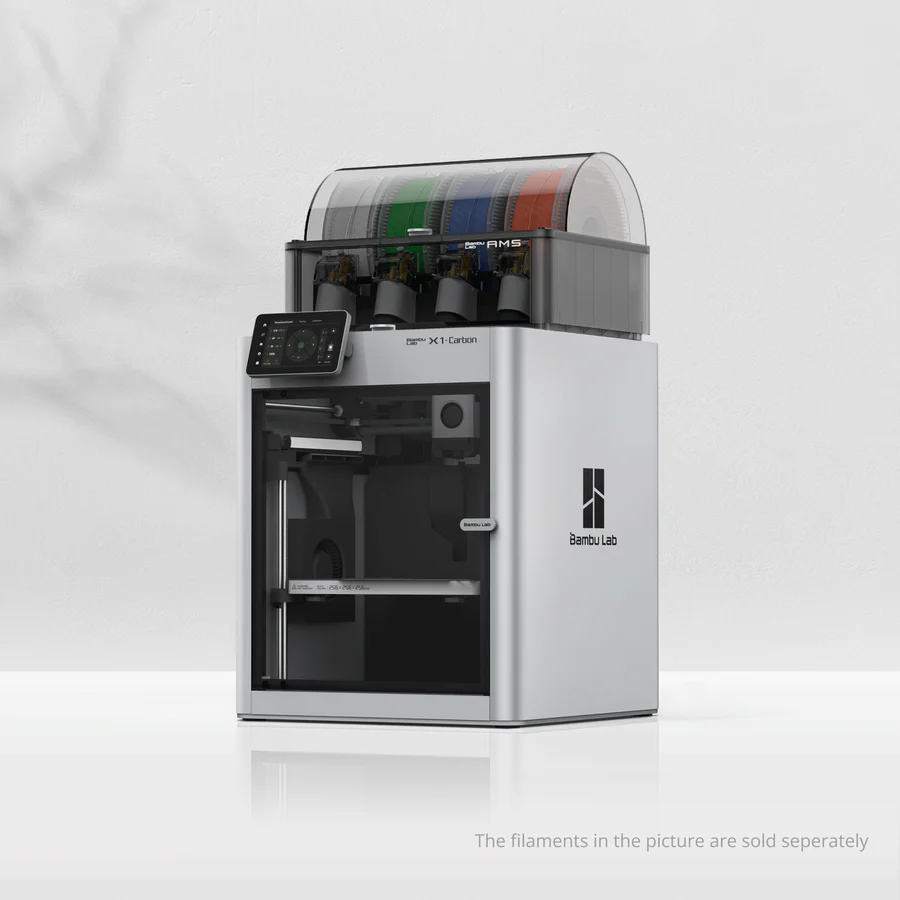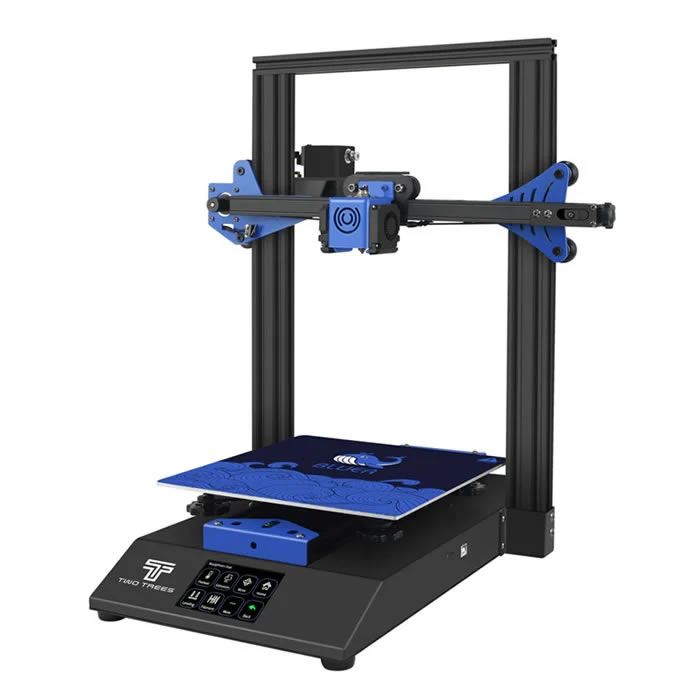Compare X1 carbon vs Bluer
Comparison between the best 3D printers
Choose the best 3D printer at the best price. The cheapest 3D printers are here.
Buy a 3D printer here with 3D Fila.
 |
 |
|
| Model | X1 carbon |
Bluer |
| Printing Material | Filament | Filament |
| Buy Filament for Bambu Lab X1 carbon | Buy Filament forTwoTrees Bluer | |
| Estimated price | $1449,00 | $169,00 |
| Manufacturer | Bambu Lab | TwoTrees |
| Release Year | 2023 | 2019 |
| Print Volume [mm] | 256x256x256 | 230x230x280 |
| Printer Size [mm] | 389x389x457 | 400x410x520 |
| Weight [kg] | 14,13 | 8 |
| Power Loss Recovery | YES | YES |
| Enclosed printer | YES | NO |
| Bed Leveling | Automatic | Manual |
| Filament End Sensor | YES | YES |
| Bed type | Heated | Heated |
| Power supply system | Direct Drive | Bowden |
| Standard nozzle | 0,4 | 0,4 |
| Maximum Nozzle Temperature [°C] | 300 | 260 |
| Maximum Bed Temperature [°C] | 120 | 100 |
| Maximum printing speed [mm/s] | 500 | 200 |
| Filament holder | YES | YES |
| Camera for supervision | YES | YES |
| Recommended filaments | PLA, PETG, TPU, PVA, PA, PA-CF, Nylon, PC | PLA, PETG |
| Recommended slicers | Bambu Studio, Super Slicer, Cura, Prusa Slicer, Orca | Cura, Simplify, Slic3r |
| Maximum Resolution [mm] | 0,1 | 0,1 |
| Processor | Quad ARM A7 1.2 GHz | MKS Robin Nano V1.2 + TMC2208 |
| Display | Touchscreen 5'' | Touchscreen TFT 3,5'' |
| Power Supply | 350 W | 240W |
| Connectivity | Wifi, Bambu bus, Cartão SD | SD / USB |
| Operating systems | Windows, Linux, Macbook | Windows, Mac, Linux |
| Date of registration in the system | 2024-04-10 | 2021-09-20 |
| Release date | 2023 | 2019 |
| Extra features | The Bambu Lab X1 Carbon revolutionizes 3D printing with stunning design, high print speeds, and a streamlined user experience. It stands out with its CoreXY system, a hotend capable of reaching 300°C, allowing for a wide range of filaments. Its LiDAR-assisted bed leveling system, vibration compensation, and AMS multicolor printing capability raise the industry standard. Print quality is impressive, with the ability to fine-tune for perfection. The X1 Carbon, with its closed build volume, not only promises but also delivers one of the most advanced 3D printing experiences available to consumers. | The Bluer offers interesting features such as automatic bed leveling, a 3.5-inch color touchscreen for easy operation, and a filament sensor to prevent print failures. It has a robust metal extruder and a generous 230 x 230 x 280 mm print volume, suitable for a variety of projects. The community mentions improvements made by Two Trees based on feedback, increasing its reliability. |
| Support for multiple colors and materials (AMS and CFS) | YES | NO |
Notes * |
||
| Cost-benefit | 7 / 10 | 7 / 10 |
| Hardware | 6.4 / 10 | 2 / 10 |
| Tela | . | . |
| Print volume | 4 / 10 | 3 / 10 |
| Performance | 4 / 10 | 2 / 10 |
Conclusion |
| In comparing the Bambu Lab X1 Carbon and the TwoTrees Bluer, it's evident that each printer has its strengths tailored to different user needs and budgets. The Bambu Lab X1 Carbon, launched in 2023, stands out as a high-end option boasting advanced features, such as automatic LiDAR-assisted bed leveling, remarkable printing speeds of up to 500 mm/s, and a comprehensive range of supported filaments including specialty materials. Its enclosed design adds to its versatility for various printing environments and enhances reliability, while its modern touchscreen interface simplifies user interaction. The impressive print volume and high-resolution capabilities further justifies its premium price point. On the other hand, the TwoTrees Bluer, released in 2019, serves as an accessible entry point for those new to 3D printing or those who prioritize affordability. Despite lacking the advanced features of the X1 Carbon, the Bluer offers essential benefits such as manual bed leveling, a decent print volume, and a user-friendly touchscreen. It's built to handle basic materials well, making it suitable for casual users or hobbyists. In conclusion, if budget permits and the user seeks high performance, versatility, and cutting-edge technology, the X1 Carbon is the clear choice, offering significant long-term value through its capabilities. Conversely, for users looking for a cost-effective solution without the need for extensive features, the Bluer remains a reliable option that supports fundamental 3D printing needs. Ultimately, the decision hinges on individual requirements and priorities regarding price, functionality, and intended use. |

